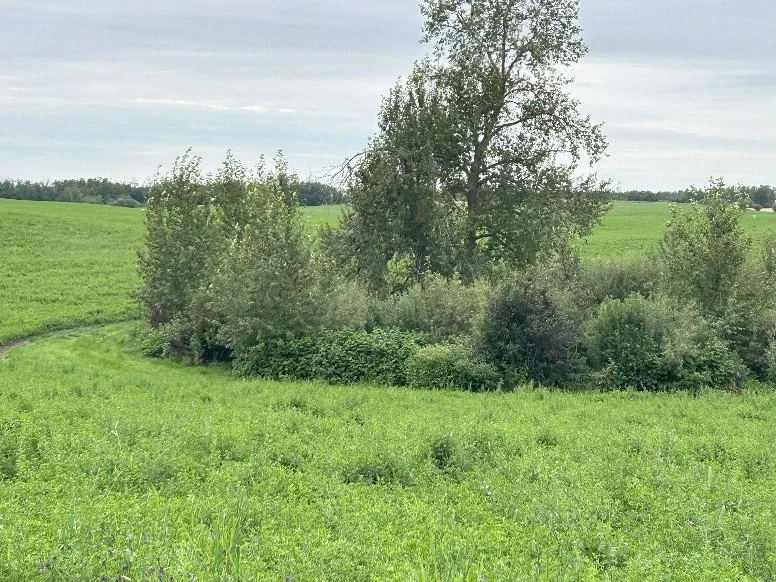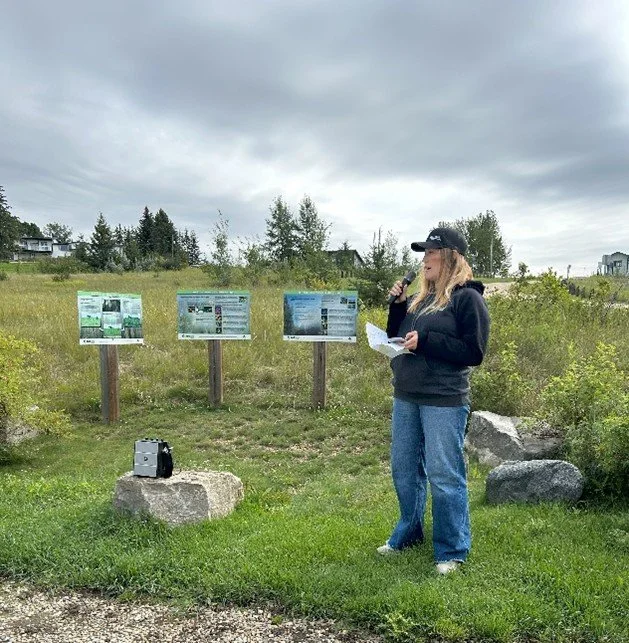A Tour of Parkland County’s ALUS Projects – Building Habitats for Nature and Agriculture
When Carri joined the Parkland Agricultural Service Board and representatives from ALUS Parkland on a tour of the county’s ALUS projects, she witnessed first‑hand how a voluntary, farmer‑delivered conservation program is reshaping marginal farmland into thriving natural areas.
An Eco‑Buffer Transforms Low‑lying Land
The tour began at an Eco‑Buffer planted seven years ago on land that previously yielded little value because it was low‑lying and poorly drained. With support from ALUS Parkland, the site was restored with native trees, shrubs and grasses. Today it is more than just a line of vegetation; it has become a mini forest that provides habitat for insects, birds and other wildlife while supporting water management. The densely planted buffer intercepts runoff from adjacent cropland, filtering nutrients before they reach waterways and reducing soil erosion. Beyond its ecological functions, the Eco‑Buffer has become a beautiful scene for the landowner to sit and enjoy.
More Local Projects Show Diverse Approaches
ALUS Parkland supports a range of conservation practices tailored to local conditions:
Pasture pipeline watering system providing off‑stream water for cattle prevents livestock from trampling riparian banks and helps improve water quality.
Fencing of cropland riparian areas restricts livestock access protecting stream banks and allowing native vegetation to recover.
Deferred wet pasture grazing incorporates managed grazing times around wetlands to allow waterfowl and other wildlife to nest undisturbed and gives soils time to recover.
Native grass seeding with pollinator islands involves reseeding marginal areas with native grasses and planting small islands of flowering plants creates habitat for wild bees and other pollinators.
These projects share a common goal: to naturalize areas adjacent to agricultural lands and improve riparian health while maintaining the productivity of core farmland. The county also promotes pollinators by providing nest boxes for solitary bees and maintaining its own beehive. Around Parkland’s subdivisions, about 15 Municipal Natural Reserves have been preserved for environmental or agricultural use. Some of these lands are licensed to local producers who continue to farm them while ensuring that residents have access to natural green spaces.
ALUS (Alternative Land Use Services) is a national non‑profit that works with local governments, conservation groups and farmers to deliver community‑developed, farmer‑delivered projects. It helps producers convert marginal or uneconomic farmland into nature‑based solutions such as wetlands, riparian buffers, shelterbelts and pollinator habitat that provide ecosystem goods and services such as cleaner air and water, carbon sequestration, wildlife habitat and climate resilience.
ALUS works because it is voluntary, flexible and locally driven. Farmers and ranchers decide which pieces of land they want to naturalize, and local committees ensure that projects align with regional priorities. The program provides technical advice, shares establishment costs and offers annual stewardship payments, making conservation a viable option for producers.
By combining agriculture with conservation in this way, Parkland County is building resilient landscapes that support wildlife, improve water management and create beautiful natural spaces for residents, all while keeping agriculture productive. The success of the Eco‑Buffer after seven years shows what is possible when farmers farm the best and leave the rest.


